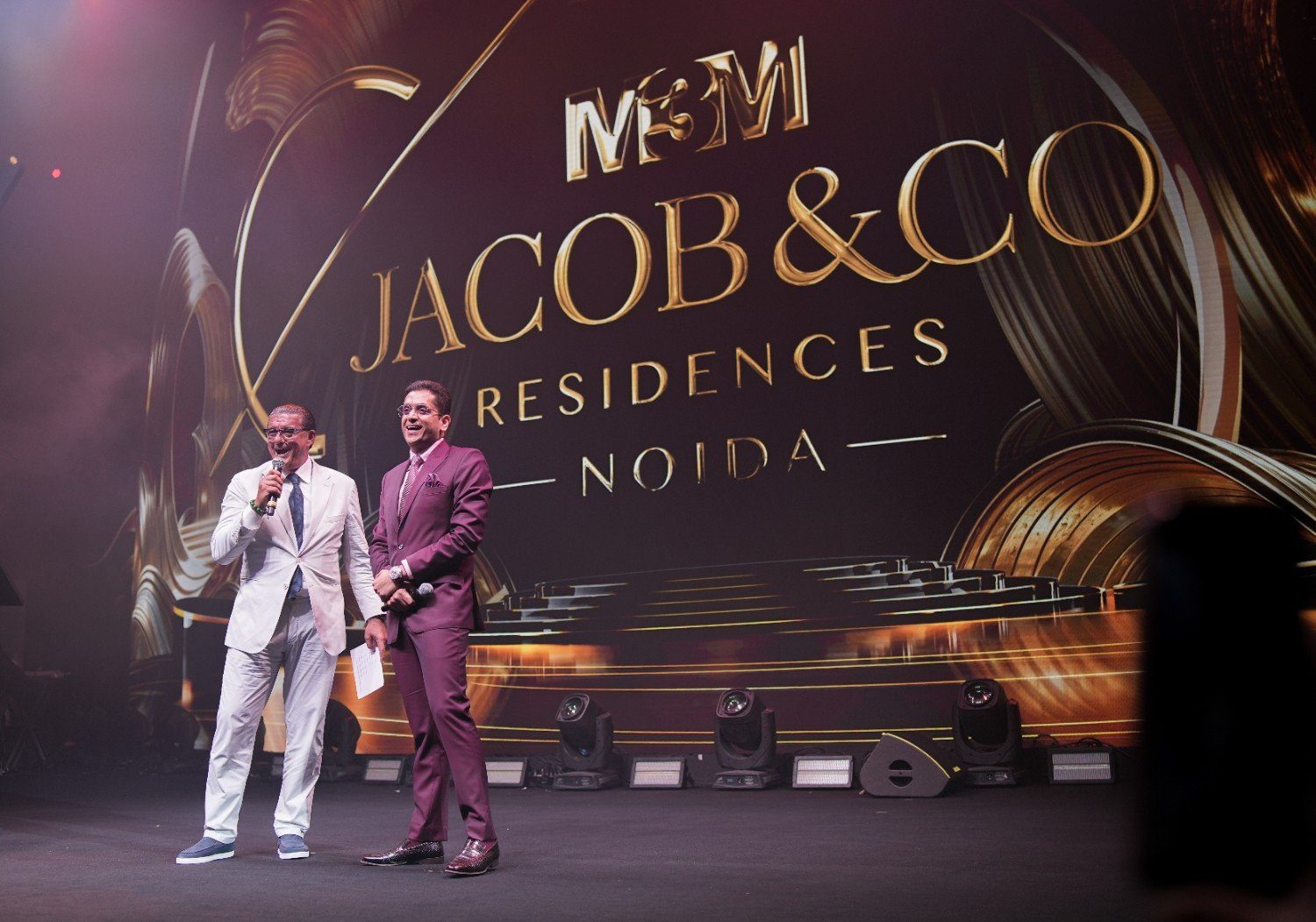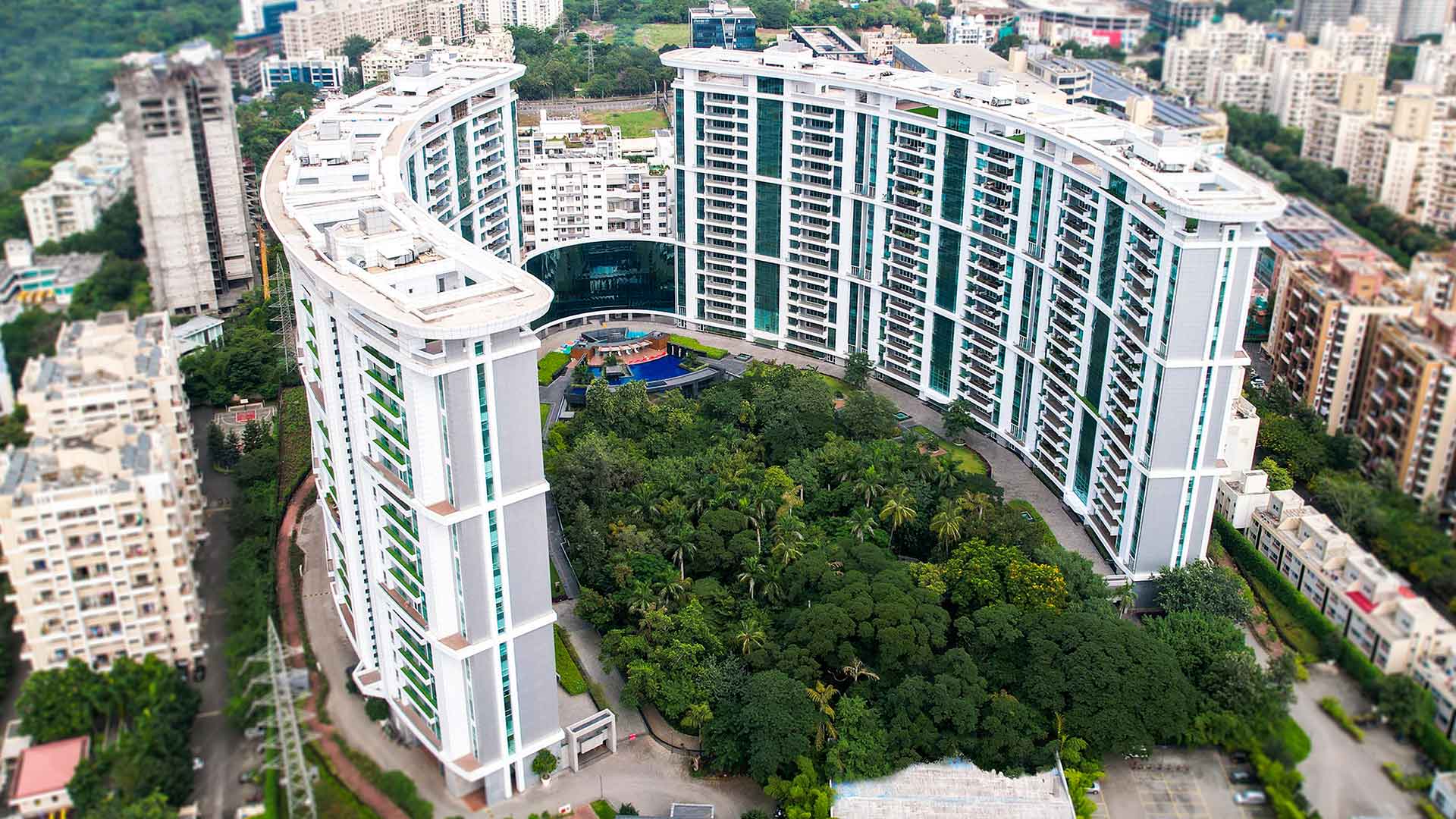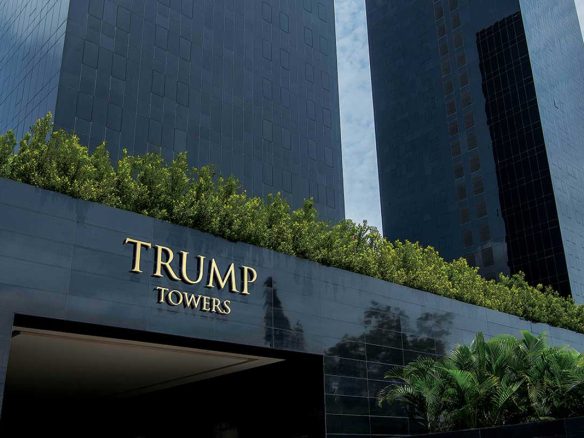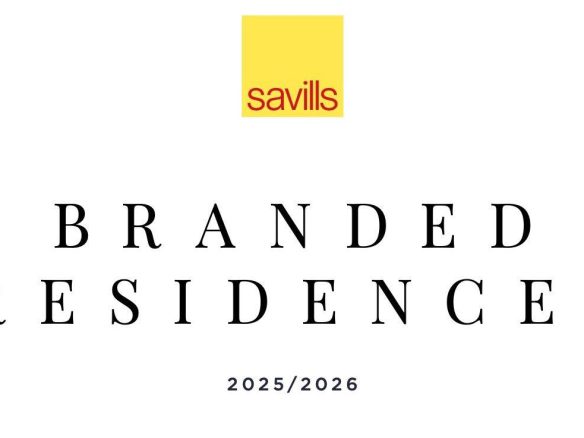Non hotel brands account for 37% of India’s branded residence market, much higher than the global market average which stands at around 20-21%. However this figure may represent a transitional phase rather than a settled market structure, with data suggesting India’s branded real estate sector could be shifting towards hotel branded residences.
In this article we review the current status of branded real estate in India, and explore whether the sector is moving in the same direction as global trends.
Global Non Hotel Branded Real Estate Leaders
YOO dominates non hotel brands globally with completed schemes and a large pipeline, but Pininfarina is showing aggressive expansion with the largest pipeline of new developments, putting the Italian design company in a firm second place
Elie Saab, Armani, Nobu and Trump are also strong participants in the market and strong contenders for further growth, with all of these companies having large pipelines around the world
More than 220 brands from hospitality, fashion, media and auto now operate in branded real estate, with non hotel brands accounting for around 60 out of the headline number.
Hotel brands dominate globally, but around 20% of all branded residences are now associated with luxury non hotel brands.
The Non Hotel Brands of Branded Real Estate in India
In India the non hotel brands operating in branded real estate development remains limited and dominated by two companies, YOO and TRUMP International.
YOO, founded by designer Philippe Starck and property entrepreneur John Hitchcox, leads design brands in India with projects across Pune, Hyderabad, and Odisha. Trump branded residences can be found in Mumbai and Delhi NCR.
Whilst there are other participants on a smaller scale, these two brands have the most established presence in the Indian market.
The Market Maturity Question

India’s branded residence sector remains in early development despite strong growth potential. The market lacks the history of the North American and European branded residences market, where hotel brands established dominance before non-hotel competitors emerged.
India’s 37% non hotel brand and 63% hotel split may not be permanent. Several indicators suggest the market is evolving toward hotel brand dominance, aligning with global patterns.
Hotel operators are aggressively expanding their Indian presence, the country clearly has huge potential to become a branded residences hotspot. India ranks tenth globally for branded residence projects (complete and pipeline)
Pipeline developments show a potential shift toward hotel branded residences, reflecting broader industry patterns, however we would not rule out further growth for the non hotel brands.
The recent launch announcement that M3M India has partnered with the world-renowned Jacob & Co. to create a world class branded residential experience in Noida is a casing point.
Jacob & Co. Residences Noida will cater to homebuyers pursuing a luxurious global lifestyle right within India. Spanning six acres in Noida’s central business district, the project offers 3 to 5 bed configurations, priced between ₹14 crore (approximately $1.68 million USD) and ₹25 crore (approximately $3 million USD).
First-Mover Advantage: YOO and Trump

YOO and Trump entered India’s market before major hotel chains begun to prioritise the sector. YOO has numerous residences across India, in cities including Delhi, Pune, Hyderabad, and Odisha, working with developers like Panchshil Realty, MySpace Properties, and DN Homes to name but a few.
Trump entered Mumbai with Lodha Group and Trump Towers Delhi NCR with M3M India and Tribeca Developers, and Trump Residences (Trump Tower 2) in sector 69 Gurgaon with Tribeca in partnership with Smartworld Developers which was announced this year and completely sold out on launch.
Globally, YOO and Trump remain the only non hotel brands with more than ten operational schemes, reflecting their longer histories in branded residential real estate.
The Hotel Industry’s Delayed Strategic Shift

International hotel companies have traditionally focused on expanding core hospitality operations in India rather than branded residences.
However the strategic calculus has now shifted to their global model, hotel operators have recognised branded real estate as a way to grow market share and diversify revenue streams in India.
Marriott, Four Seasons, Ritz-Carlton, and almost every major chain now view branded residences as a key growth opportunity that generates licensing fees, enhances brand presence, and creates customer touch points beyond traditional hotel stays.
India is now firmly on the radar for every major international hotel chain that is associated with luxury real estate.
India’s Wealth Driving India’s Branded Residences Sector
India had 85,698 high net worth individuals with assets exceeding $1 million in 2025, representing 6% year-on-year growth. In 2024, India added over 33,000 new millionaires, with HNWI population growing 5.6% to 378,810 individuals.
Total HNWI wealth rose 8.8% to Rs 128.75 trillion ($1.5 trillion), making India one of the fastest-growing wealth markets globally. Projections indicate HNWIs will reach 93,753 by 2028, with ultra-high net worth individuals expected to grow 50.1% by 2028, the fastest rate globally.
This buyer demographic skews younger than in established luxury markets. Wealth creators from technology, entrepreneurship, and business sectors demonstrate different purchasing patterns than inherited wealth.
Younger HNWIs might show a willingness to consider brands across sectors rather than defaulting to hospitality names.
Design appreciation and the exclusivity of a brand name are major factors for Indian luxury purchases, buyers may evaluate branded residences based on architectural merit, interior design quality, and aesthetic differentiation, not solely on service delivery models that hotel branded residences are so well known for.
The Hotel Vs Non Hotel Branded Residences Model
Hotel branded residences provide protocols developed through managing hotel properties worldwide for decades. Global systems will be in place for service, back of house, housekeeping, concierge operations, amenity management, maintenance and hospitality brand standards. A Ritz-Carlton residence in Mumbai should provide similar levels of service, lifestyle and amenties as it would in Miami or London.
Non hotel residences emphasise design direction, brand recognition, and lifestyle curation. YOO residences feature interiors and common areas specified by Philippe Starck. Trump properties focus on brand prestige and status association. ArmaniI and Pininfarina are all heavily designed focused.
The operational model of non hotel branded residences, often involves third-party management companies rather than direct brand oversight. This creates two different value propositions.
Hotel branded residences offer tried and tested hotel service levels, operational expertise, and hospitality driven amenities.
Non hotel branded residences provide distinctive design statements, brand creativity & uniqueness.
Price premiums suggest both approaches work in India as they do globally. Branded residences in India whether with a hotel or luxury brand, command substantial premiums over non-branded luxury properties.
India’s Branded Residences Market Structure
Mumbai has six operational and planned branded residence schemes, Delhi NCR has seven, and Pune has five. Chennai, Hyderabad, Odisha, Bengaluru, and Kolkata show smaller numbers.
Geographic distribution indicates non-hotel brands enter markets beyond established luxury centers, with YOO’s presence in Odisha demonstrating willingness to pioneer emerging locations.
India’s luxury residential segment, properties priced at Rs 5 crore ($600,000) and above, showed consistent growth across major cities from 2010 to 2025. This expanding market provides room for multiple brand categories without direct competition for identical buyer segments.
Hotel and non-hotel brands can coexist because they target different purchaser priorities.
Developer Considerations
Branded residences are complex and professional advice should be taken when considering a branded development. Non hotel brands structure partnerships differently than hotel operators.
Design and lifestyle brands typically license their names and provide brand standards, specifications, and design direction, developers maintain primary responsibility for construction, sales, and delivery. Operational involvement remains limited, but developers working with non-hotel brands gain flexibility in project execution while accessing brand value and premium pricing potential.
Hotel brands will often seek full management contracts covering amenities, services, and common areas and projects will have to adhere to strict brand standards. Hotel brands will also assist with sales and marketing, tapping into their global network to maximise exposure for the project.
In some locations a hotel brand may also require a hotel to be built within the same development, but standalone hotel branded residences are becoming more popular and common.
Fee structures also vary. Hotel brands charge licensing fees plus ongoing management fees tied to operational involvement. Non hotel brands focus primarily on upfront licensing and design fees with minimal ongoing commitments.
These structural fee differences and operational models, can impact project economics and developer preferences, and why professional consultation with a branded residences development professional should always be taken.

LEARN MORE ABOUT BRANDED RESIDENCES
Regional Patterns
India’s position as a developing branded residence market with rapid HNWI growth creates conditions favouring experimentation with multiple brand types. India’s slower development timeline allows new hotel and non-hotel brands to enter simultaneously.
The luxury real estate segment’s growth trajectory across India supports a multi-brand approach from real estate developers.
Mumbai’s luxury property sales grew from 1,080 units in 2010 to 4,180 units in 2025. Delhi NCR expanded from 720 units to 3,600 units over the same period. Pune increased from 150 units to 960 units.
Bengaluru grew from 175 units to 1,120 units. Hyderabad expanded from 100 units to 480 units, while Chennai grew from 125 units to 560 units. Source NOESIS
India’s Branded Real Estate Development Outlook
The 37% non-hotel market share faces pressure from multiple directions. Hotel brands’ operational advantages, potential faster sales velocity, and aggressive expansion plans suggest India may converge towards the global patterns.
As buyers gain experience with both brand types, the operational predictability and service delivery of hotel brands may prove more valuable than design differentiation.
The rapid HNWI growth creates room for multiple brand categories. Most new millionaires fall under the “Millionaires Next Door” category, holding investable assets between Rs 8.6 crore ($1 million) and Rs 42.9 crore ($5 million). This expanding buyer pool may support both hotel and non-hotel branded inventories.
However design and appreciation of high end luxury among Indian luxury consumers remains strong. Younger wealth creators from technology, entrepreneurship, and business sectors demonstrate different purchasing patterns than inherited wealth.
These buyers may evaluate a branded residence purchase based on the brand name itself, architectural interior design quality, and aesthetic differentiation.
The next five years will determine whether India’s 37% non-hotel share is permanent or transitional. Current pipeline projects, buyer satisfaction with existing developments, and sales performance will shape developer appetite for either hotel branded residences or non hotel brand partnerships.
Hotel brands’ aggressive expansion and operational advantages suggest movement toward global norms, but India’s unique buyer demographics and design consciousness may sustain higher non hotel brand acceptance than more mature markets.
One thing we can guarantee, branded residences in India are not simply a passing trend, they are a catalyst to a whole new era of luxury real estate opportunities for buyers, investors and brands.

BRESI stands as the definitive resource for branded residences, connecting developers, buyers, and thought leaders through its innovative digital marketplace and authoritative editorial content. Whether exploring a groundbreaking new development for sale or accessing critical market performance metrics, BRESI is the premier destination for the global branded residences industry.




